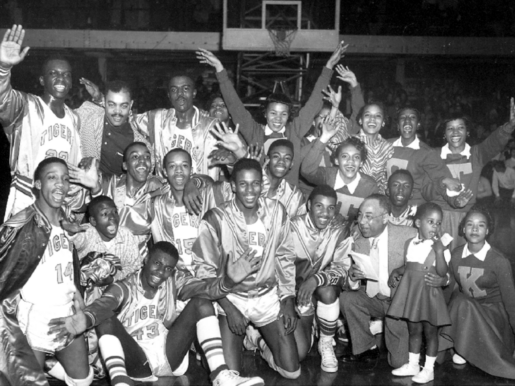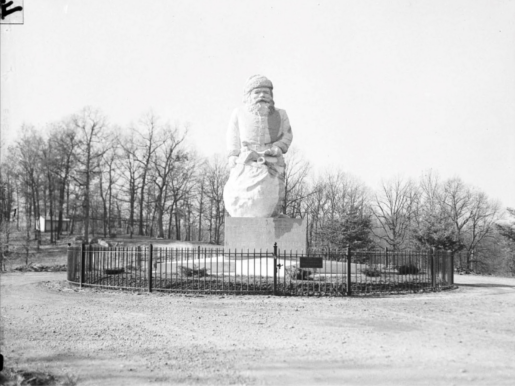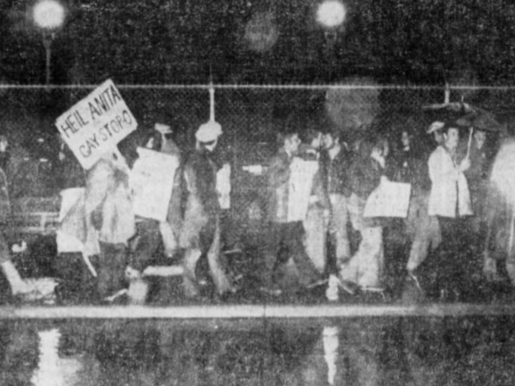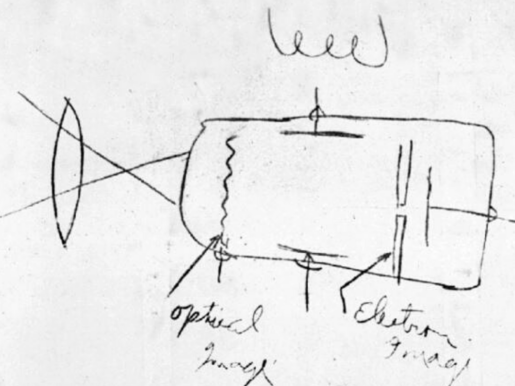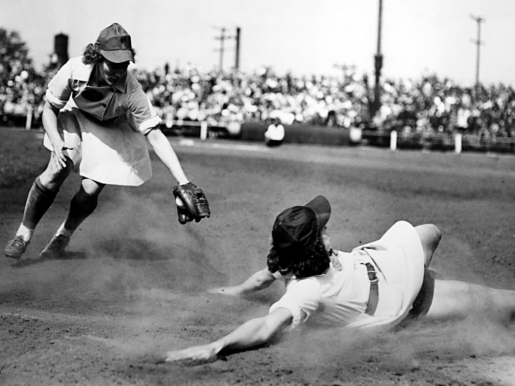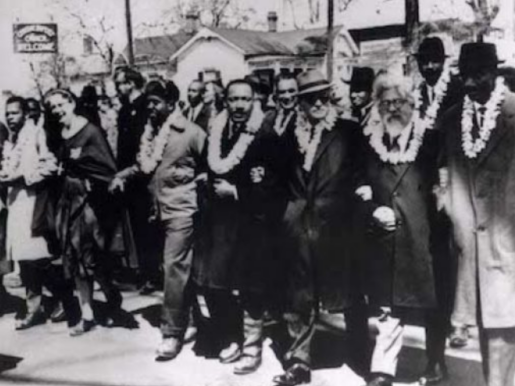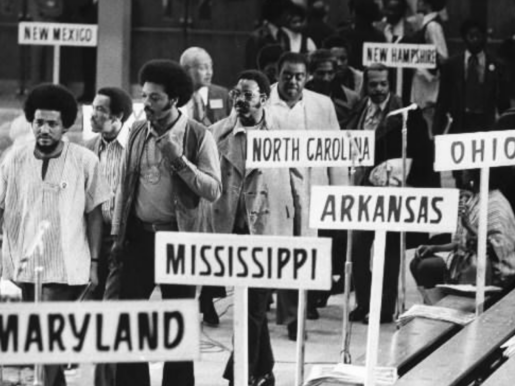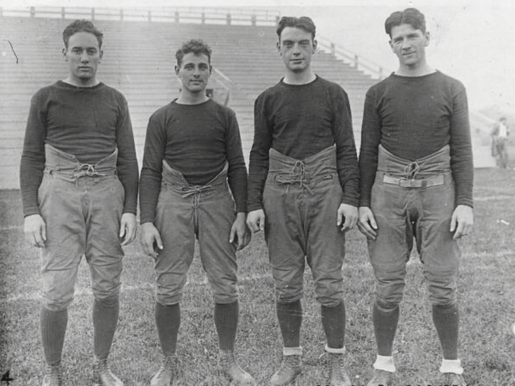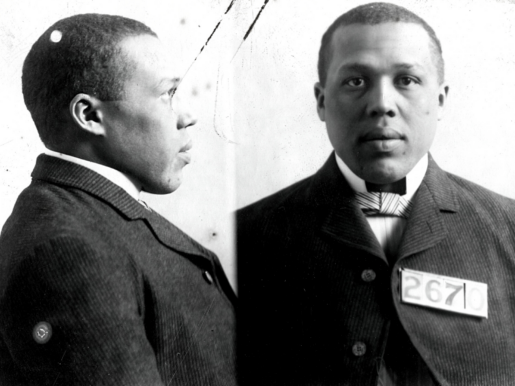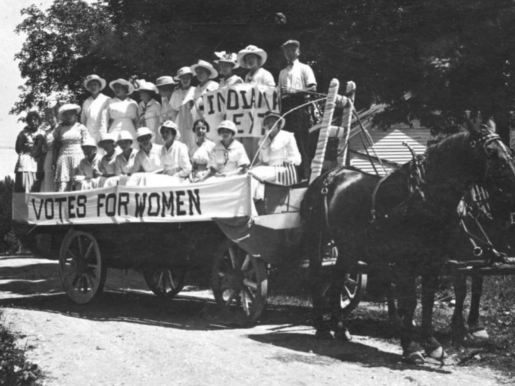Crispus Attucks: Challenging Segregation On and Off the Court
In this episode, we explore how Crispus Attucks High School went from being excluded from the Indiana High School Athletics Association to being the first all-Black school to win a high school state basketball championship in the nation.
Santa Claus, Indiana: “Where It’s Christmas Every Day”
“Nestled in the wooded hills of southern Indiana, lies a land of fantasy…where it’s Christmas every day.”
That place is Santa Claus, Indiana. On this episode, we take a tour of the oddly named Indiana town that embraces the holiday spirit all year round. Join us!
Petals, Not Pies: Queer Hoosiers Protest Anita Bryant
On October 14, 1977, gay rights activist Thom Higgins reserved his place in history when he threw a pie in the face of anti-gay crusader Anita Bryant during a Des Moines, Iowa press conference. When Bryant made her way to Indiana less than two weeks later for a rally, gay activists welcomed her not with a pie in the face, but with Hoosier kindness. In this episode, we examine Hoosier’s reactions to Bryant’s appearances in the state during the early years of the fight for gay rights.
Philo T. Farnsworth: Father of Television
Philo T. Farnsworth conceived of the idea for electronic television in the middle of an Idaho potato field at just 13 years old. At age 19, he produced the first functional prototype for his idea. For nearly three decades following that, he Farnsworth worked to bring his invention to the American home but was stymied every step of the way by financial, legal, and technological problems.
“The Dutiful Dozen”: The South Bend Blue Sox
For twelve seasons (1943-1954), over 600 women competed in the All-American Girls Professional Baseball League (AAGPBL). The South Bend Blue Sox, one of four original teams, showcased the ballplayers’ determination and athleticism during their 1952 season, when a player strike left the team with just 12 members days before the playoffs. This episode contextualizes the AAGPBL and Blue Sox within the larger history of women in sport, culminating in the Dutiful Dozen’s stunning 1952 championship.
“I Did Not Walk Alone:” The Civil Rights Work of Rabbi Maurice Davis
In 1965, at the height of the Civil Rights Movement, Reverend Dr. Martin Luther King, Jr. called for religious leaders representing all faiths to join him in Selma, Alabama, for a march responding to recent violence against peaceful protestors. Rabbi Maurice Davis of the Indianapolis Hebrew Congregation (IHC) answered this call, despite threats to his life. This episode looks at the work of Rabbi Davis to fight segregation and discrimination in Indianapolis, especially in housing and employment. It also considers why Jewish Americans joined the Black-led Civil Rights Movement in greater numbers than other groups and what lessons his work teaches us today about allyship and interfaith work for greater rights for all Americans.
“Tribe Come Home:” The 1972 National Black Political Convention
Thousands of Black Americans from around the country came to Gary, Indiana, for the 1972 Black National Political Convention to transform the Black Power Movement into the Black Political Power Movement. Leaders worked to channel collective outrage – caused by voter suppression and discrimination, as well as the assassinations of major Civil Rights leaders – into political reform.
Notre Dame Tackles the Klan
On May 24, 1924, the Ku Klux Klan attempted to hold a meeting in South Bend, Indiana. They were met with furious Notre Dame students and South Bend citizens, who banded together to drive the organization out of town. When the Klan used this confrontation as fodder for anti-immigrant, anti-Catholic propaganda, university administration needed to find a way to combat the smear campaign. They found their answer in a wildly successful Notre Dame football team.
Rufus Cantrell: King of Ghouls
Rufus Cantrell was a lot of things in his life: A driver. A porter. A clerk. An undertaker. In 1902, he added a new title to that list: The King of Ghouls. Cantrell, along with approximately seven other men, ran one of the most successful body-snatching syndicates in the city of Indianapolis. This is the story of his downfall.
Indiana Women’s Suffrage: The New Day Dawns
In this, the second of a two-part series covering the women’s suffrage movement in Indiana, we follow the women who dedicated their lives to the fight for enfranchisement to its end – the 19th Amendment to the U.S. Constitution.

